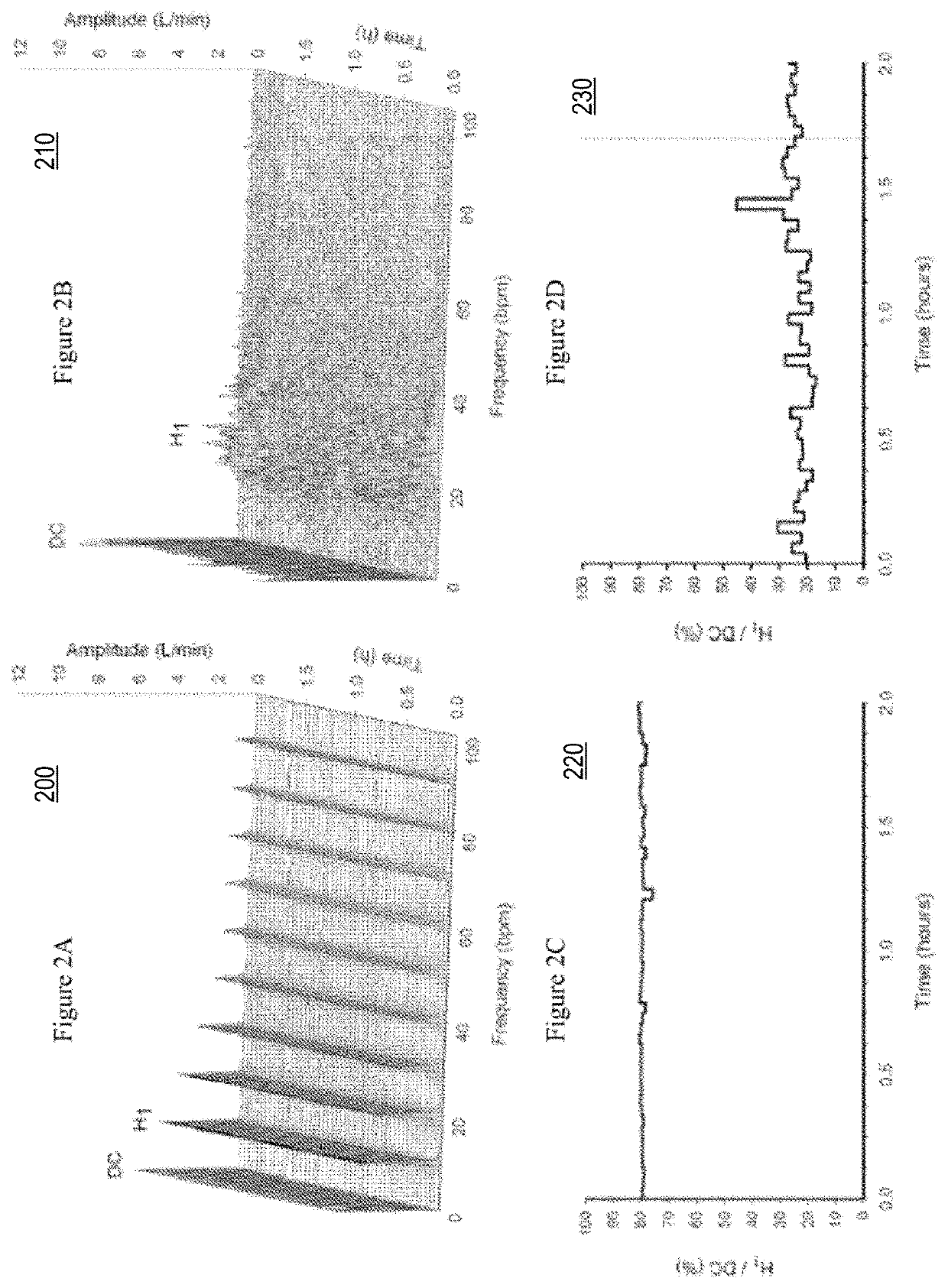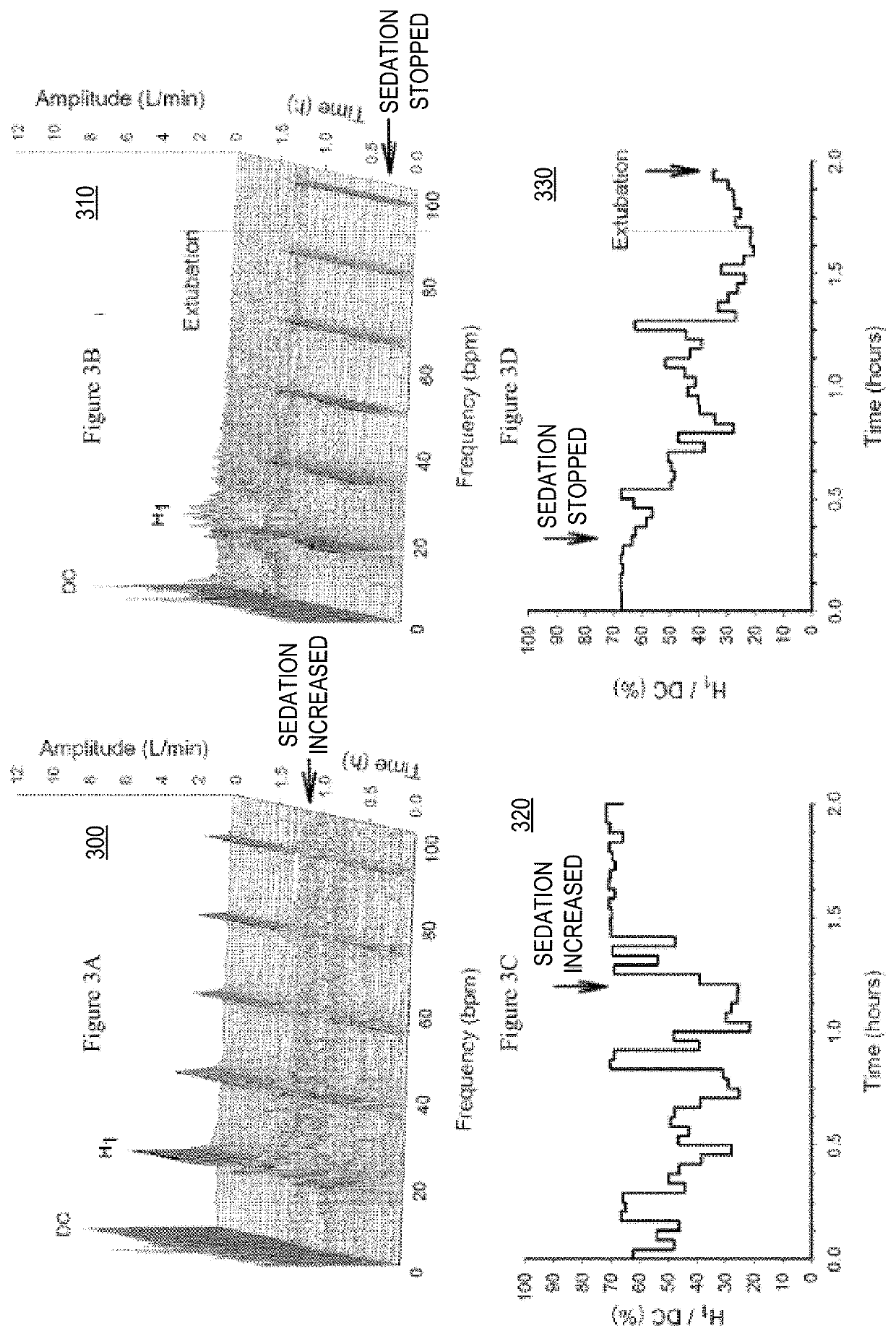Detection and Display of Respiratory Rate Variability, Mechanical Ventilation Machine Learning, and Double Booking of Clinic Slots, System, Method, and Computer Program Product
- Summary
- Abstract
- Description
- Claims
- Application Information
AI Technical Summary
Benefits of technology
Problems solved by technology
Method used
Image
Examples
example embodiments
Exemplary Design of Example Embodiments
[0311]In this section, we will first talk about the hardware of the device and its power subsystem, followed by a discussion on using the CPU to draw respiratory signals from the ventilator and to process the signals. Finally, we will explore the user interface subsystem, and the data export functionality of the device.
[0312]In order to create a stand-alone device, a fully encased box needed to be designed that could be implemented in the hospital setting. Pictures of the front and back of the finished box can be seen in FIGS. 12A and 12B, respectively. As previously mentioned, inputs for the power supply, ventilator, and external memory drive are accessible ports on the box. Clinicians may export data by inserting an SD card adapter into the slot on the front of the box, and by following the prompts on the screen. The microcontroller, portable power supply, and all other hardware is contained within the box (summarized in FIG. 11). The dock se...
PUM
 Login to View More
Login to View More Abstract
Description
Claims
Application Information
 Login to View More
Login to View More - R&D
- Intellectual Property
- Life Sciences
- Materials
- Tech Scout
- Unparalleled Data Quality
- Higher Quality Content
- 60% Fewer Hallucinations
Browse by: Latest US Patents, China's latest patents, Technical Efficacy Thesaurus, Application Domain, Technology Topic, Popular Technical Reports.
© 2025 PatSnap. All rights reserved.Legal|Privacy policy|Modern Slavery Act Transparency Statement|Sitemap|About US| Contact US: help@patsnap.com



